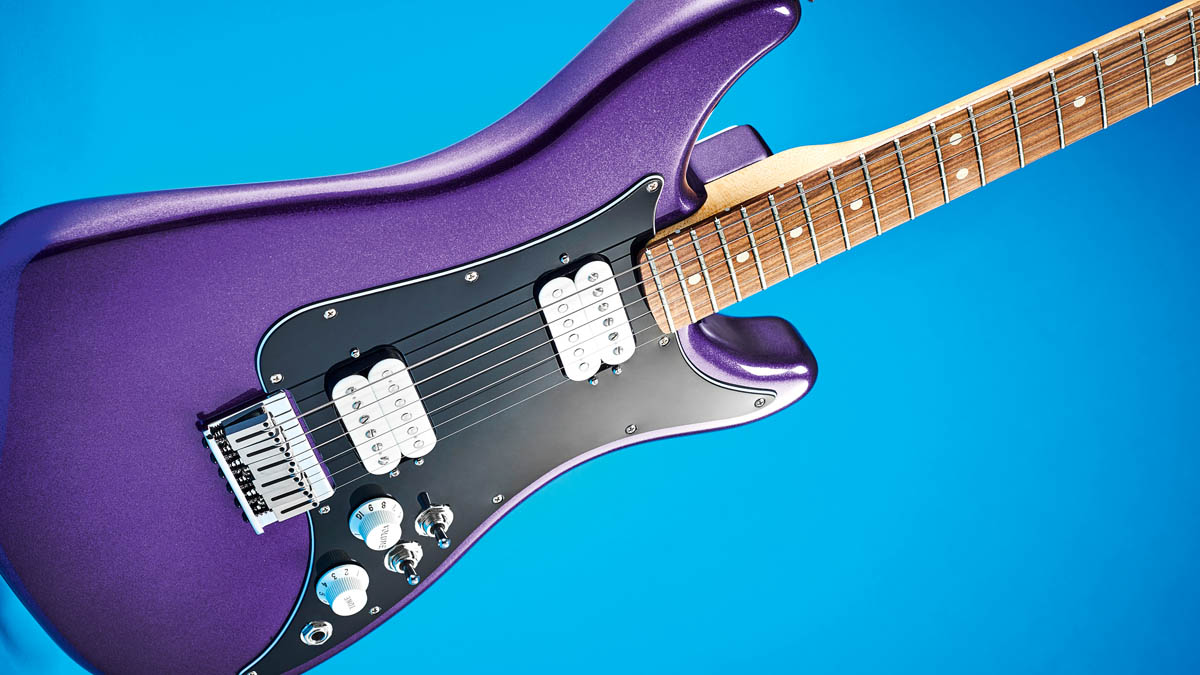The secrets behind Elliot Easton's tone on The Cars' Touch and Go
This highlight from the Boston new wave heroes' 1980 album Panorama is all about the magic in the midrange

The guitar solo Elliot Easton recorded for the Cars’ Touch and Go is considered one of his all-time greatest performances, but producer Roy Thomas Baker and Easton’s bandmates weren’t completely convinced when the guitarist first recorded it in the studio.
“I wrote a solo that was a really crafted, jazz/bop, Steely Dan-style thing where I played through the chord changes,” Easton recalls, noting that he perfected it over a three-week period. “I was really excited to record that solo, and the first time I recorded it, I played it perfect. I was elated, but when I looked around at everyone else, it was crickets.
“They asked me to try a different approach and suggested that I play a slow solo on a six-string bass with tremolo. I’m a lefty and didn’t have a six-string bass, so I took one of Ben Orr’s Precision Basses, flipped it upside down and plugged it into a Fender Twin Reverb with tremolo and reverb.
“After a few passes I blew up, said it was ridiculous and asked to do one more pass at my original solo. They finally agreed, so I grabbed my guitar off the stand and started playing furiously with tears in my eyes because I was still angry.
You hear the really pissed off 25-year-old kid who worked very hard on something and was afraid that it wasn’t going to get on the record
“When I stopped playing, they said, ‘There it is! Before it sounded like you were thinking about it too much.’ I could have strangled them. You hear the really pissed off 25-year-old kid who worked very hard on something and was afraid that it wasn’t going to get on the record.”
Easton recorded the solo using a Fender Lead I plugged into a Mesa Boogie Mark II head with a Marshall 4x12 cabinet. “The guitar was full up with the Lead I humbucker in series and the Boogie set on stun.”
To give the tone a more prominent horn-like quality not quite available from the Boogie’s midrange control and 750Hz slider on the graphic EQ, the lower midrange was probably boosted on the mixing console, most likely using the 500Hz setting on the Trident A-Range console at Cherokee Studios where the guitar solos were recorded.
All the latest guitar news, interviews, lessons, reviews, deals and more, direct to your inbox!
Touch and Go features numerous cool guitar parts, although 45 seconds pass before the very first guitar track is heard during the chorus – a signature “clicky” single-note line played by Ric Ocasek on a Fender Jaguar.
Easton makes his entry around the one-minute mark, playing a sliding figure on the low E and A strings using the same Lead I and Boogie rig and settings that he used for the solo (settings for the solo and this part are below).
I was really excited to record that solo, and the first time I recorded it, I played it perfect. I was elated, but when I looked around at everyone else, it was crickets
The Precision Bass/Twin Reverb rig Easton used to appease his naysayers went to good use for a brief melodic line during the choruses. Easton’s next guitar part comes during the second verse where he uses a Rickenbacker 360/12 to play a few ambient chords with 370-375ms/two-repeat stereo delays and compression added at the board.
During the second and subsequent choruses, he layered a tasteful arpeggio figure played on a 1965 Lake Placid Blue Fender Telecaster set to both pickups. The chorus effect was created by double tracking the part, with the tape machine’s varispeed set slightly faster or slower on the second take. Both the Rickenbacker and Telecaster were plugged into the Twin Reverb.
Original gear
GUITAR: 1979 Fender Lead I with ash body and rosewood ngerboard, Volume: 10, Tone: 10, Switch 1: series, Switch 2: center (humbucking).
AMP: 1979 Mesa Boogie Mark II (Volume 1: 8, Treble: 5/Pull Shift, Bass: 3, Middle: 10, Master 1: Pull Gain Boost, Lead Drive: 9/Pull Lead, Lead Master: 7/Pull Bright, Presence: 5, Graphic EQ 80Hz: -4dB, 240Hz: +4dB, 750Hz: +11dB, 2200Hz: +9dB, 6600Hz: +8dB, EQ In) into Marshall 1960A 4x12 with Celestion G12M speakers.
STRINGS/TUNING: D’Addario XL120 .009-.042/Standard
PICK: Fender 358 Shape small teardrop celluloid Medium.
Get the sound, cheap!



- Fender Player Series Lead III
- Seymour Duncan Nazgul bridge humbucker
- Mesa Boogie Mark Five:25 1x10 combo
TONE TIP: Easton’s solo tone here is all about midrange and gain. The Nazgul pickup has similar construction and output (ceramic magnet, 13k ohm resistance) to the Fender Lead I’s Seth Lover humbucker. The Boogie isn’t exactly cheap, but it has the requisite midrange and gain character – and essential graphic EQ.
Chris is the co-author of Eruption - Conversations with Eddie Van Halen. He is a 40-year music industry veteran who started at Boardwalk Entertainment (Joan Jett, Night Ranger) and Roland US before becoming a guitar journalist in 1991. He has interviewed more than 600 artists, written more than 1,400 product reviews and contributed to Jeff Beck’s Beck 01: Hot Rods and Rock & Roll and Eric Clapton’s Six String Stories.

